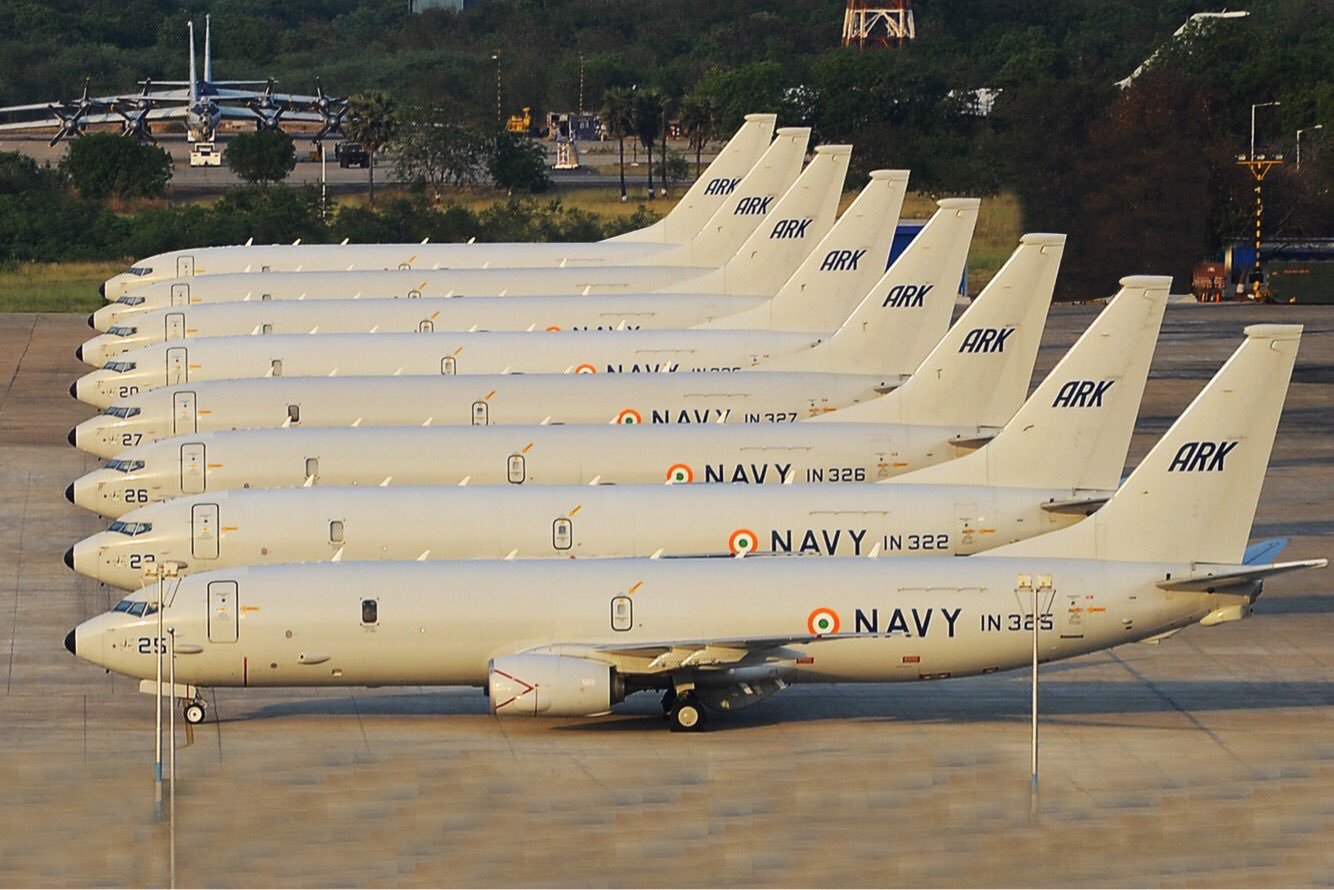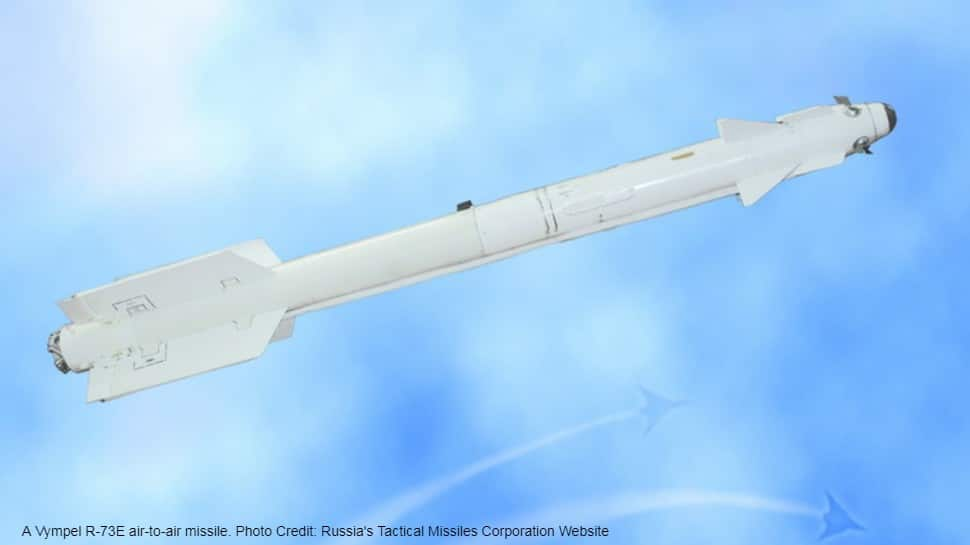SOURCE: AFI


In a sharp escalation of political rhetoric, India’s principal opposition party, the Indian National Congress, has launched a scathing attack on the Narendra Modi-led government over reports of a potential acquisition of the Lockheed Martin F-35 fighter jet from the United States.
The Congress party, leveraging social media platforms like X, has labeled the proposed deal as “Modi’s Mega Blunder,” raising concerns about its cost, operational viability, and strategic implications for India. This criticism comes amid growing discussions about India’s defense modernization and its relationship with global powers, particularly the United States.
Continue readingSOURCE: AFI


On February 13, 2025, a delegation from the French Army visited the School of Artillery in Devlali, Maharashtra, where they were briefed on the design features and operational capabilities of India’s indigenous Pinaka Multiple Launch Rocket System (MLRS). The visit, which included detailed discussions and a live firing demonstration, underscores the growing interest of the French military in India’s advanced artillery systems and highlights the deepening defense ties between the two nations.
The French delegation, comprising senior military officers and technical experts, was welcomed at the School of Artillery, a premier training institution for India’s artillery forces. During the visit, Indian Army officials and representatives from the Defence Research and Development Organisation (DRDO) provided an in-depth briefing on the Pinaka MLRS. The presentation covered the system’s design features, operational capabilities, and its role in modern warfare.
Continue readingSOURCE: AFI


At Aero India 2025, one of the much-anticipated highlights was the unveiling of the unmanned Kiran Mk2, also known as the Optionally Manned Combat Aircraft (OMCA) platform. The aircraft was expected to be showcased on the tarmac for static display, drawing significant attention for its potential in reshaping India’s defense capabilities. However, as the event unfolded, the aircraft was noticeably absent, leaving attendees and experts wondering about the reasons for its missing display.
The Kiran Mk2, a development from the well-known HAL Kiran trainer aircraft, has been developed with the potential to serve as an unmanned or optionally manned platform for various military roles, such as surveillance, combat training, and potentially even light combat missions. The aircraft was designed to provide a versatile and cost-effective solution for the Indian Air Force (IAF) to enhance its operational flexibility while reducing the risk to pilots in certain high-risk missions.
Continue readingSOURCE: ARITRA BANERJEE / FOR MY TAKE / IDRW.ORG


The Russia-Ukraine conflict has highlighted how modern warfare is rapidly evolving, with an increased reliance on aerial threats such as drones, swarm attacks, attack helicopters, and precision-guided munitions. The destruction of armored vehicles, including tanks, by kamikaze drones and other aerial platforms has reinforced the importance of having a robust mobile air defence system to protect mechanised forces on the battlefield.
For India, these lessons are particularly relevant. The Galwan clash in 2020 highlights the importance of rapid troop mobilisation, leading to the introduction of high-mobility vehicles for infantry along the northern borders. At the same time, there has been a steady increase in mechanised assets along both the northern and western borders to address emerging security challenges. However, to ensure comprehensive battlefield protection, these mechanised formations require proportionate air defence cover that can move alongside them and respond to evolving aerial threats.
Continue readingSOURCE: RAUNAK KUNDE / NEWS BEAT / IDRW.ORG


At Aero India 2025, held from February 10 to February 14, 2025, at Yelahanka Air Force Station in Bengaluru, Rostec officials confirmed to idrw.org that the Izdeliye 177S, also known as Product 177S, is being offered to India not only for upgrades to the Sukhoi Su-30 MKI fleet but also for the country’s ambitious Advanced Medium Combat Aircraft (AMCA) fifth-generation fighter program.
The Izdeliye 177S, showcased prominently at the United Engine Corporation (UEC) stand during Aero India 2025, is a fifth-generation engine designed for tactical aircraft. Rostec officials highlighted its advanced features, noting that it delivers increased thrust compared to its predecessors, such as the AL-31FP, which currently powers the IAF’s Su-30 MKI fleet. With a service life of up to 6,000 hours—three times that of the AL-31FP—the 177S incorporates cutting-edge technologies aimed at improving fuel efficiency and reducing operational costs.
Continue readingSOURCE: RAUNAK KUNDE / NEWS BEAT / IDRW.ORG


At Aero India 2025, officials from the Gas Turbine Research Establishment (GTRE) provided key insights into the ongoing development of the Kaveri Engine Derivate (KDE) to idrw.org. The focus of upcoming inflight trials in Russia this year will primarily be on validating recent upgrades and modifications to the KDE, rather than conducting extensive testing of the engine itself. These trials aim to ensure that the newly built KDE units, which incorporate significant improvements over their predecessors, meet the required performance benchmarks.
GTRE officials revealed that older Kaveri engines were modified to serve as testbeds for the KDE, and most testing parameters, including the targeted dry thrust of 49kN, have already been validated. However, the newly delivered KDE units feature upgraded components, necessitating revalidation to confirm their reliability and performance. While these trials are not expected to involve a major testing phase, they are critical for ensuring the engine’s readiness for operational deployment.
Continue readingSOURCE: RAUNAK KUNDE / NEWS BEAT / IDRW.ORG


In a significant milestone for India’s aerospace and defense sector, Coimbatore-based Jayem Automotive has successfully developed an indigenous 180hp diesel engine specifically designed for unmanned aerial vehicles (UAVs). The engine, showcased at Aero India 2025 held at Air Force Station Yelahanka, Bengaluru, has completed all required ground trials, marking a major step forward in India’s quest for self-reliance in critical defense technologies.
According to company officials speaking to idrw.org, the engine is now being integrated into the upgraded Tapas (Tactical Airborne Platform for Aerial Surveillance) UAV, with taxi trials and in-flight trials scheduled to follow soon.
Continue readingSOURCE: AFI


In a significant advancement for India’s aerospace industry, Mishra Dhatu Nigam Limited (MIDHANI), in collaboration with Hindustan Aeronautics Limited (HAL), showcased a breakthrough at Aero India 2025. Sudhanshu Mohan Jena, Executive Director of HAL Koraput, and Shri A.K. Sharma, General Manager (Marketing) of MIDHANI, unveiled the newly developed SuperNi 41 plates, an indigenous high-performance material tailored for aero engine applications.
Known as SuperNi 41, this material is a precipitation-hardenable nickel-chromium base superalloy. It boasts exceptional strength retention at temperatures ranging from 649°C to 982°C, making it ideal for environments where thermal loads are extreme. Its design caters to severely stressed components that require superior corrosion and oxidation resistance.
Continue readingSOURCE: AFI


At Aero India 2025, Adani Defence showcased the Prahast Modular Range Extension Kit, a cutting-edge technology designed to transform conventional bombs into precision-guided “smart bombs.” The Prahast kit is a long-range precision-guided munition (PGM) developed in collaboration with Al Tariq, a part of EDGE Group, a state-owned defense conglomerate based in the United Arab Emirates (UAE). idrw.org reports that this advanced system has garnered attention for its modular capabilities and its to be integrated into LCA-Tejas Mk1A.
The Prahast Range Extension Kit is designed to provide a rapid, cost-effective solution to upgrade existing bomb inventories. The kit enables conventional bombs, such as the Mk81, Mk82, and Mk83, to be converted into highly accurate, long-range precision-guided munitions (PGMs). By integrating a variety of modern technologies into these traditional ordnance, the Prahast Kit ensures that India’s air forces can extend the reach and lethality of their strike capabilities without the need for entirely new bomb designs.
Continue readingSOURCE: AFI


Bangalore’s Alpha Design Technologies has clinched a significant deal to supply its newly developed mobile very-high-frequency (VHF) radar to the Indian Air Force (IAF). This development was highlighted by Vishal Anand, Assistant Vice-President of Projects at Alpha Design, during the Aero India 2025 show in Bangalore.
According to Anand, the radar system is designed to enhance the IAF’s ability to detect stealth aircraft, which are characterized by a low radar cross-section (RCS). The contract involves the delivery of six VHF radars, with the first unit anticipated to be delivered by mid-March.
Continue readingSOURCE: AFI


In a significant step towards enhancing the reliability, serviceability, and maintainability of helicopters, Hindustan Aeronautics Limited (HAL) Helicopter MRO Division, the Indian Institute of Science (IISc), Bengaluru, and the Foundation for Science Innovation and Development (FSID) have entered into a Memorandum of Agreement (MoA). This collaboration, formalized recently, aims to address critical issues related to helicopter tail-rotor vibrations, a persistent challenge in rotary-wing aircraft operations, through innovative research, advanced engineering solutions, and practical mitigation strategies.
Helicopters, by design, are complex machines that operate under extreme aerodynamic and mechanical stresses. The tail rotor, a critical component, plays an essential role in counteracting the torque produced by the main rotor, ensuring stability and directional control. However, tail-rotor systems are prone to vibrations, which can lead to several operational and maintenance challenges, including:
Continue readingSOURCE: IDRW.ORG


In a significant development in India’s ongoing evaluation of advanced infantry combat vehicles (ICVs), the US-made Stryker, manufactured by General Dynamics Land Systems, encountered challenges during high-mobility trials conducted in the high-altitude terrain of Ladakh.
The trials, aimed at assessing the vehicle’s suitability for operations in one of the world’s most challenging environments, revealed critical shortcomings in the Stryker’s performance, primarily due to its underpowered 300-horsepower (hp) engine. Responding to feedback from the Indian Army, General Dynamics has announced plans to upgrade the Stryker with a more powerful 600hp engine, with re-trials scheduled once initial testing of the upgraded vehicle is completed.
Continue readingSOURCE: IDRW.ORG


In a significant development for India’s maritime security capabilities, the Indian Ministry of Defence (MoD) is reportedly on the verge of clearing a long-pending deal for the procurement of six additional Boeing P-8I maritime patrol aircraft.
This decision comes after sustained diplomatic pressure from the Trump administration, which has been pushing India to increase its purchases of US-made defense equipment as part of a broader strategy to strengthen bilateral defense ties and counterbalance China’s growing influence in the Indo-Pacific region. The deal, initially cleared by the US nearly four years ago, had been delayed due to concerns over escalating costs but is now moving forward, driven by strategic imperatives and the Indian Navy’s operational needs.
Continue readingSOURCE: AFI


In a significant boost to India’s defense manufacturing capabilities, Adani Defence and Aerospace has announced plans to locally produce the R-73E, a Within Visual Range (WVR) air-to-air missile (AAM), in India. Rebranded as “Raya” for its indigenous production, this initiative aligns with the Indian government’s ‘Make in India’ and ‘Aatmanirbhar Bharat’ (self-reliant India) programs, aimed at reducing dependence on foreign imports and strengthening domestic defense production.
The R-73E, developed by Russia’s Vympel NPO, is a highly agile, short-range air-to-air missile widely regarded as one of the most effective WVR missiles in the world. Known by its NATO reporting name “AA-11 Archer,” the missile is a critical component of the Indian Air Force’s (IAF) arsenal, equipping fighter aircraft such as the MiG-29, Su-30 MKI, and MiG-21 Bison. With a range of up to 30 kilometers, the R-73E is renowned for its infrared homing (heat-seeking) capabilities, exceptional maneuverability, and ability to engage targets at off-boresight angles of up to 45 degrees, making it a formidable weapon in close-combat aerial engagements.
Continue readingSOURCE: AFI


The recent announcement by US President Donald Trump on February 13, 2025, that the United States will provide India with the Lockheed Martin F-35 stealth fighter jet has sent shockwaves through Pakistan’s media and strategic circles. This development, made during a joint press conference with Indian Prime Minister Narendra Modi in Washington, D.C., has sparked widespread concern and alarm in Pakistani media outlets, which view the potential transfer of advanced military technology to India as a threat to regional stability and Pakistan’s security.
The Pakistani media’s reaction has been marked by a mix of panic, criticism, and calls for diplomatic action, reflecting deep-seated fears about the shifting military balance in South Asia. Below, we explore this reaction and cite specific examples from Pakistani media outlets to illustrate the extent of their concern.
Continue reading